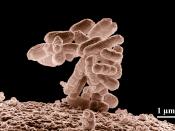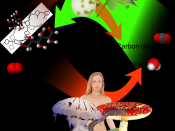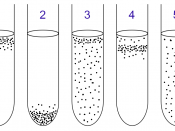Bacteria have evolved all forms of nutrition and nearly all forms of metabolic pathways early in prokaryotic life. Early in Earth's history, the physical and biological environments were constantly changing. In response to these changes, bacteria and other types of prokaryotes developed new metabolic capabilities. Natural selection would favor those with the metabolic capabilities most suitable to the changing environments, so a diversity of metabolic capabilities was produced. In turn, these new metabolic capabilities would change the environment for the next community of prokaryotes.
Bacteria are grouped into four major metabolic groups based on how they obtain carbon and energy from the environment. Photoautotrophs are photosynthetic organisms that use light energy to synthesize organic compounds from carbon dioxide. Chemoautotrophs obtain energy by oxidizing inorganic substances and need carbon dioxide as a carbon source. Photoheterotrophs use light for energy but must obtain their carbon in organic from. Chemoheterotrphs must consume organic molecules for both energy and carbon.
Diverse bacteria are able to metabolize most nitrogenous compounds. They perform some of the key steps in the cycling of nitrogen through ecosystems. Some chemoautotrophic bacteria convert ammonium (NH4+) to nitrite (NO2-). Other bacteria "denitrify" nitrite or nitrate (NO3-), a process that returns nitrogen gas (N2) to the atmosphere. In a process called nitrogen fixation, prokaryotes use nitrogen gas (N2) directly and convert it to ammonium (NH4+).
Oxygen has different effects on bacterial growth. Obligate aerobes use O2 for cellular respiration and need it to grow. Facultative anaerobes can use O2 but can also grow without it by the process of fermentation. Obligate anaerobes die when exposed to oxygen. These can live entirely by fermentation or by anaerobic respiration.
Some of the bacteria's metabolic capabilities are very valuable to us humans. For example, humans use bacteria in research and technology. Since bacteria...


